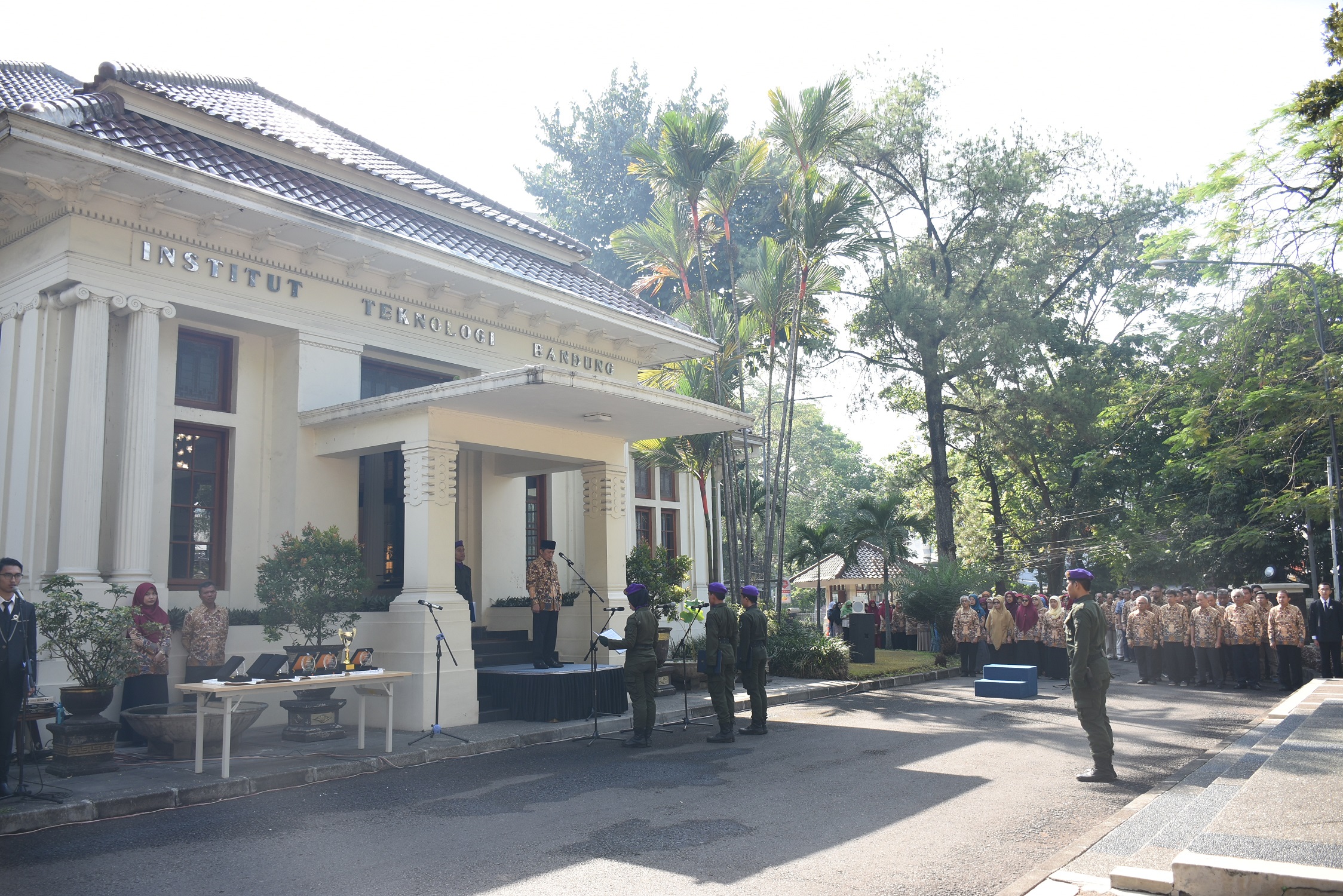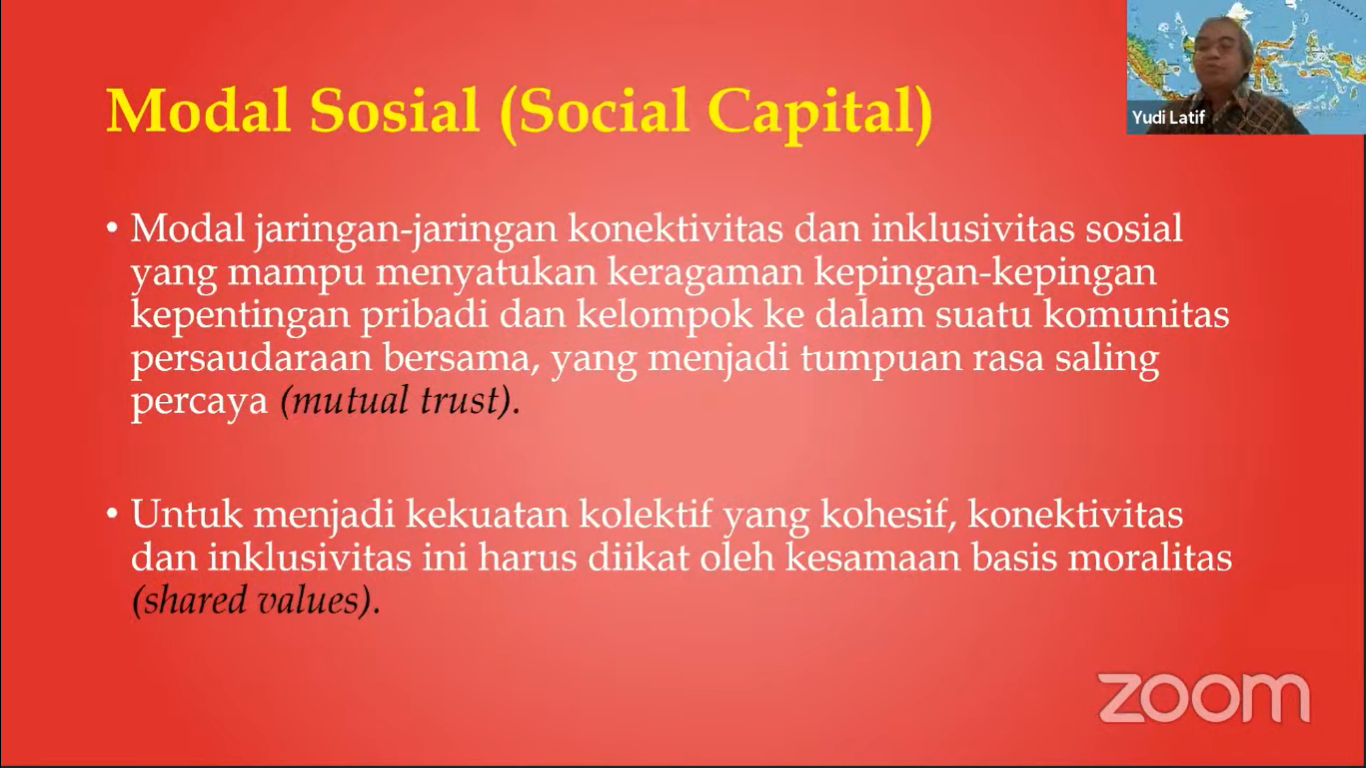Prof. Josaphat Tetuko’s Scientific Oration: Remote Sensing Technology is Indonesia's Key to Leading the World
By Adi Permana
Editor Adi Permana
BANDUNG, itb.ac.id—Remote sensing has attracted the attention of Prof. Josaphat Tetuko Sri Sumantyo, B.Eng., M.Eng., Ph.D. since young age. It all started from a promise he made to his father at the age of 5. He wanted to develop the first original radar in the world to protect his father whenever he was on duty as a member of the Indonesian Special Forces Command (Airborne).
On the 102nd anniversary of Technical Higher Education in Indonesia in the West Hall of ITB on Monday (4/7/2022), Prof. Josaphat delivered a scientific oration titled "Remote Sensing Technology, Indonesia's Key to Leading the World".
“The sensors installed on satellites for observing the Earth usually use a passive sensor or an optic (camera) and active sensor, namely microwave sensors. Camera sensors are very reliant on sunlight so their usage has limitations. On the other hand, active sensors or radars can transmit and receive their own emitted microwaves, and can be operated 24 hours without the influence of sunlight,” said the Professor in Chiba University, Japan.
Synthetic Aperture Radar (SAR) is an example of said radar. It is suitable for operation in areas with dense cloud distribution, such as Indonesia. SAR sensors can be relied upon to explore the country’s natural resources and monitor the condition of its infrastructure.
Among the 446 satellites that orbit to observe the Earth, only about 15 satellites are equipped with SAR and work at L, C, S, and X band frequencies. “The need for SAR that is accurate, lightweight, robust, rich in polarization information, and multiplatform for drones, airplanes, and even satellites, drove me to invent Circularly Polarized Aperture Radar (CP-SAR) which has been developed at Josaphat Microwave Remote Sensing Laboratory," explained Prof. Josaphat. This invention has received a patent titled “Radar and Radar onboard Satellite” numbered 7028437.
Prof. Josepath continued how CP-SAR has shown itself on the world stage and helped design and build SAR systems for various world space institutions, namely ESA, JAXA, KARI, NSPO, BRIN, etc. According to him, this is a form of knowledge and technology diplomacy in Indonesia. “We have a quarter of the world's population. It is only natural that we can control at least a quarter of the world's portion in all fields, especially science and technology,” stated the founder of the Josapath Microwave Remote Sensing Laboratory.
Another advantage of the SAR sensor is that it can produce intensity, phase, and polarization information. Even though it's only my three parameters, various derived information can be used for monitoring disasters, agriculture and plantations, fisheries, infrastructure, mapping of natural resources and settlements, as well as for supporting One Map Policy, tracking cross-borders, anti-terrorists, etc.
An example of a SAR application that has been developed at the Josaphat Laboratory is the usage of CP-SAR for more detailed and accurate aircraft detection compared to the current conventional airport radar. Eventually, the SAR application can be used to modernize airport radar as an air traffic controller.
The application of interferometric SAR for disasters, especially in Indonesian territories, has been initiated since 1999 by cooperating with various parties in Indonesia, especially the staff in the ITB Geodesy and Geomatics Engineering Study Program. The results of this collaboration were able to describe the phenomenon of land subsidence, forest fires, and even the monitoring of volcanic eruptions that often occur.
Remote sensing technology is the key to manage this nation more efficiently. “Hopefully this technology can continue to be developed by our young researchers. This work of Indonesians is hoped to contribute to the world in protecting the environment and global security so that Indonesia's remote sensing technology can become a standard for other countries. Of course, this is the key for our country to lead the world," concluded Prof. Josaphat.
Reporter: Maharani Rachmawati Purnomo (Oceanography, 2020)
Translator: Hanna Daniela Ayu (Aerospace Engineering, 2021)

.jpg)
.jpg)

.jpg)
.jpg)


